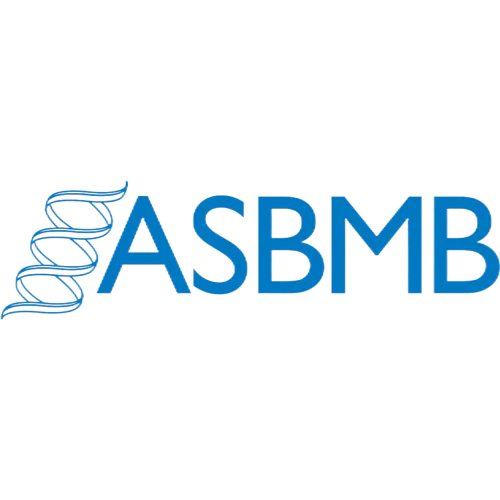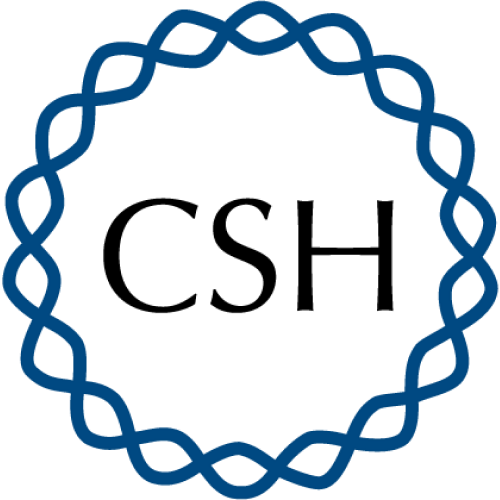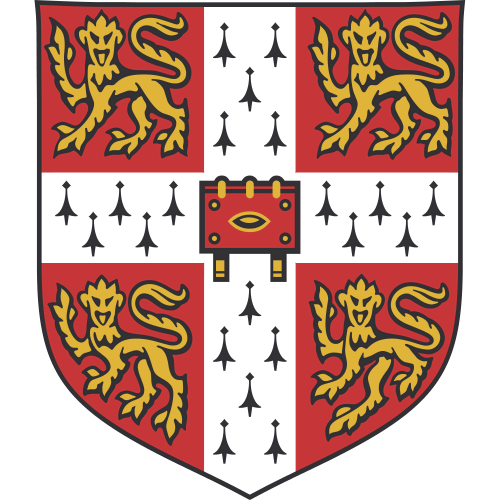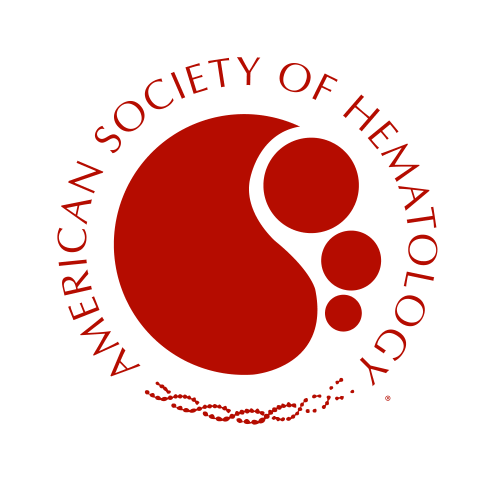Open Access


Science, volume 350, issue 6260, pages aab4070
Structure of Tetrahymena telomerase reveals previously unknown subunits, functions, and interactions
Jiang Jiansen
1, 2, 3
,
Chan Henry
3
,
Cash Darian D
3
,
Miracco Edward J
3
,
Ogorzalek Loo Rachel R
4
,
Upton Heather E
5
,
Cascio Duilio
3, 6
,
Obrien Johnson Reid
3
,
Collins Kathleen
5
,
Loo Joseph A
3, 4, 6
,
Zhou Z. Hong
1, 2
,
Feigon Juli
2, 3, 6
1
Department of Microbiology, Immunology, and Molecular Genetics, UCLA, Los Angeles, CA 90095, USA.
|
2
California Nanosystems Institute, UCLA, Los Angeles, CA 90095, USA.
|
3
Department of Chemistry and Biochemistry, University of California, Los Angeles (UCLA), Los Angeles, CA 90095, USA.
|
4
Department of Biological Chemistry, UCLA, Los Angeles, CA 90095, USA.
|
5
Department of Molecular and Cell Biology, University of California, Berkeley, Berkeley, CA 94720, USA.
|
6
UCLA–U.S. Department of Energy (DOE) Institute of Genomics and Proteomics, UCLA, Los Angeles, CA 90095, USA.
|
Publication type: Journal Article
Publication date: 2015-10-15
PubMed ID:
26472759
Multidisciplinary
Abstract
Chromosome-capping enzyme complex Telomeres cap and protect the ends of our chromosomes. The telomerase complex helps maintain the telomere DNA repeat sequences. Telomerase consists of an RNA and a number of protein subunits. Jiang et al. used cryo–electron microscopy and x-ray crystallography to determine the structure of the Tetrahymena telomerase complex. The telomerase is made up of three subcomplexes, which include two previously unknown protein subunits in addition to the seven known subunits. The structures also reveal the path of the RNA component in the telomerase catalytic core. Science, this issue p. 10.1126/science.aab4070 The structure of a complete telomerase complex reveals two previously unknown subunits and the path of the RNA. INTRODUCTION Telomerase is a ribonucleoprotein complex that extends the telomere DNA at the 3′ ends of linear chromosomes, thereby counteracting the loss of DNA from replication and nucleolytic processing. Although telomerase is largely inactive in somatic cells, it is active in stem cells and highly active in most cancer cell lines, where its activity is necessary for the cells’ immortal phenotype. Thus, telomerase is an important regulator of aging, tumorigenesis, and stem cell renewal. Telomerase uses a template contained within the integral telomerase RNA (TER) and a telomerase reverse transcriptase (TERT) to synthesize multiple copies of the G-strand telomere repeat, which is TTGGGG in Tetrahymena. Telomerase can synthesize telomere repeat DNA in vitro with only TERT and TER, but physiological function requires a variety of other proteins. Telomerase recruitment to telomeres is regulated by the cell cycle, where its activity requires interplay between telomere end-protection and telomerase proteins. Telomere end-maintenance also requires coordinated recruitment of telomerase and DNA polymerase α for synthesis of G and C strands, respectively. RATIONALE A detailed mechanistic description of telomerase and its interaction at telomeres has been hampered by a lack of structural models, due to difficulties in obtaining samples of sufficient quantity and quality, as well as subunit complexity and flexibility and low sequence identity among subunits from different organisms. Unlike yeast and mammalian telomerase, Tetrahymena telomerase is constitutively assembled, making it possible to purify from cells and study all holoenzyme components in a stable complex. In addition to TERT and TER, the Tetrahymena telomerase holoenzyme contains the known proteins p65, p75, p45, p19, p50, and Teb1, a telomeric G-strand binding protein that is paralogous to the large subunit of heterotrimeric replication protein A (RPA). TER contains a template/pseudoknot domain enclosing a template with sequence complementarity to ~1.5 telomere repeats and a separate activating domain. Though TER is essential for activity, the physical arrangement of TER on TERT has remained largely unknown, as have details of protein subunit interactions. RESULTS We report cryo–electron microscopy (cryo-EM) structures at ~9 Å resolution and pseudoatomic modeling of Tetrahymena telomerase, crystal structures of p19 and p45C, and a nuclear magnetic resonance structure of the TER pseudoknot. Two newly identified and functionally distinct RPA-related complexes, Teb1-Teb2-Teb3 (TEB) and p75-p45-p19, are connected to the TERT-TER-p65 catalytic core by p50. The presence of Teb2 and Teb3 is confirmed by mass spectrometry. p19 and p45 are structurally homologous to Ten1 and Stn1, respectively, which are found in the telomere end-binding complex CST (CTC1-STN1-TEN1) that recruits DNA polymerase α. The path of TER on TERT and the location of the TERT essential N-terminal domain (TEN) are revealed, providing mechanistic insights into telomerase function. A network of interactions between TEN, p50, and TEB regulates and enhances activity. p50-Teb1 appears to be structurally and functionally homologous to human TPP1-POT1. Negative-stain electron microscopy of labeled telomeric DNA bound to telomerase reveals the exit path from the template. CONCLUSION The structure of the Tetrahymena telomerase catalytic core and our identification of telomerase holoenzyme subcomplexes that are homologous to those found at mammalian, plant, and yeast telomeres provide new mechanistic insights and suggest commonalities of telomerase interaction, action, and regulation at telomeres. Two views of the Tetrahymena telomerase holoenzyme. The top left image shows a front view of pseudoatomic models as spacefill superimposed on the cryo-EM map. Models of protein domains connected by flexible linkers and not visible in the cryo-EM map are illustrated as ribbons. The bottom right image shows a back-view schematic with the telomerase-bound telomeric G strand connected to a chromosome via double-stranded telomere DNA. Teb1AB domains are presumed to be ordered when DNA bound. Telomerase helps maintain telomeres by processive synthesis of telomere repeat DNA at their 3′-ends, using an integral telomerase RNA (TER) and telomerase reverse transcriptase (TERT). We report the cryo–electron microscopy structure of Tetrahymena telomerase at ~9 angstrom resolution. In addition to seven known holoenzyme proteins, we identify two additional proteins that form a complex (TEB) with single-stranded telomere DNA-binding protein Teb1, paralogous to heterotrimeric replication protein A (RPA). The p75-p45-p19 subcomplex is identified as another RPA-related complex, CST (CTC1-STN1-TEN1). This study reveals the paths of TER in the TERT-TER-p65 catalytic core and single-stranded DNA exit; extensive subunit interactions of the TERT essential N-terminal domain, p50, and TEB; and other subunit identities and structures, including p19 and p45C crystal structures. Our findings provide structural and mechanistic insights into telomerase holoenzyme function.
Citations by journals
|
1
2
3
4
5
6
7
8
9
|
|
|
Nucleic Acids Research

|

Nucleic Acids Research
9 publications, 7.03%
|
|
Current Opinion in Structural Biology

|

Current Opinion in Structural Biology
6 publications, 4.69%
|
|
Nature

|

Nature
5 publications, 3.91%
|
|
Journal of Biological Chemistry

|

Journal of Biological Chemistry
5 publications, 3.91%
|
|
Nature Structural and Molecular Biology

|

Nature Structural and Molecular Biology
4 publications, 3.13%
|
|
Proceedings of the National Academy of Sciences of the United States of America

|

Proceedings of the National Academy of Sciences of the United States of America
4 publications, 3.13%
|
|
Wiley interdisciplinary reviews. RNA

|

Wiley interdisciplinary reviews. RNA
3 publications, 2.34%
|
|
RNA Biology

|

RNA Biology
3 publications, 2.34%
|
|
RNA

|

RNA
3 publications, 2.34%
|
|
Nature Communications

|

Nature Communications
2 publications, 1.56%
|
|
Genes

|

Genes
2 publications, 1.56%
|
|
Nature Reviews Molecular Cell Biology

|

Nature Reviews Molecular Cell Biology
2 publications, 1.56%
|
|
Structure

|

Structure
2 publications, 1.56%
|
|
Cell

|

Cell
2 publications, 1.56%
|
|
Biochimica et Biophysica Acta - General Subjects

|

Biochimica et Biophysica Acta - General Subjects
2 publications, 1.56%
|
|
Journal of Molecular Biology

|

Journal of Molecular Biology
2 publications, 1.56%
|
|
Trends in Biochemical Sciences

|

Trends in Biochemical Sciences
2 publications, 1.56%
|
|
Biochemistry

|

Biochemistry
2 publications, 1.56%
|
|
Analytical Chemistry

|

Analytical Chemistry
2 publications, 1.56%
|
|
Annual Review of Biochemistry

|

Annual Review of Biochemistry
2 publications, 1.56%
|
|
Annual Review of Biophysics

|

Annual Review of Biophysics
2 publications, 1.56%
|
|
Cold Spring Harbor perspectives in biology

|

Cold Spring Harbor perspectives in biology
2 publications, 1.56%
|
|
Current Topics in Medicinal Chemistry

|

Current Topics in Medicinal Chemistry
1 publication, 0.78%
|
|
Current Proteomics

|

Current Proteomics
1 publication, 0.78%
|
|
Epigenomics

|

Epigenomics
1 publication, 0.78%
|
|
Oncotarget

|

Oncotarget
1 publication, 0.78%
|
|
Rejuvenation Research

|

Rejuvenation Research
1 publication, 0.78%
|
|
Biochemical Society Transactions

|

Biochemical Society Transactions
1 publication, 0.78%
|
|
Emerging Topics in Life Sciences

|

Emerging Topics in Life Sciences
1 publication, 0.78%
|
|
1
2
3
4
5
6
7
8
9
|
Citations by publishers
|
5
10
15
20
25
|
|
|
Elsevier

|

Elsevier
24 publications, 18.75%
|
|
Springer Nature

|

Springer Nature
19 publications, 14.84%
|
|
Oxford University Press

|

Oxford University Press
11 publications, 8.59%
|
|
Multidisciplinary Digital Publishing Institute (MDPI)

|

Multidisciplinary Digital Publishing Institute (MDPI)
10 publications, 7.81%
|
|
American Chemical Society (ACS)

|

American Chemical Society (ACS)
7 publications, 5.47%
|
|
Cold Spring Harbor Laboratory

|

Cold Spring Harbor Laboratory
7 publications, 5.47%
|
|
Wiley

|

Wiley
6 publications, 4.69%
|
|
American Society for Biochemistry and Molecular Biology

|

American Society for Biochemistry and Molecular Biology
5 publications, 3.91%
|
|
Annual Reviews

|

Annual Reviews
5 publications, 3.91%
|
|
Proceedings of the National Academy of Sciences (PNAS)

|

Proceedings of the National Academy of Sciences (PNAS)
4 publications, 3.13%
|
|
Taylor & Francis

|

Taylor & Francis
3 publications, 2.34%
|
|
Bentham Science

|

Bentham Science
2 publications, 1.56%
|
|
Portland Press

|

Portland Press
2 publications, 1.56%
|
|
Frontiers Media S.A.

|

Frontiers Media S.A.
2 publications, 1.56%
|
|
Future Medicine

|

Future Medicine
1 publication, 0.78%
|
|
Impact Journals

|

Impact Journals
1 publication, 0.78%
|
|
Mary Ann Liebert

|

Mary Ann Liebert
1 publication, 0.78%
|
|
Royal Society of Chemistry (RSC)

|

Royal Society of Chemistry (RSC)
1 publication, 0.78%
|
|
EMBO press

|

EMBO press
1 publication, 0.78%
|
|
American Society for Microbiology

|

American Society for Microbiology
1 publication, 0.78%
|
|
Cambridge University Press

|

Cambridge University Press
1 publication, 0.78%
|
|
American Association for the Advancement of Science (AAAS)

|

American Association for the Advancement of Science (AAAS)
1 publication, 0.78%
|
|
American Association for Cancer Research (AACR)

|

American Association for Cancer Research (AACR)
1 publication, 0.78%
|
|
American Society of Hematology

|

American Society of Hematology
1 publication, 0.78%
|
|
Rockefeller University Press

|

Rockefeller University Press
1 publication, 0.78%
|
|
5
10
15
20
25
|
- We do not take into account publications that without a DOI.
- Statistics recalculated only for publications connected to researchers, organizations and labs registered on the platform.
- Statistics recalculated weekly.
{"yearsCitations":{"type":"bar","data":{"show":true,"labels":[2015,2016,2017,2018,2019,2020,2021,2022,2023,2024],"ids":[0,0,0,0,0,0,0,0,0,0],"codes":[0,0,0,0,0,0,0,0,0,0],"imageUrls":["","","","","","","","","",""],"datasets":[{"label":"Citations number","data":[1,20,15,17,16,16,21,12,9,1],"backgroundColor":["#3B82F6","#3B82F6","#3B82F6","#3B82F6","#3B82F6","#3B82F6","#3B82F6","#3B82F6","#3B82F6","#3B82F6"],"percentage":["0.78","15.63","11.72","13.28","12.5","12.5","16.41","9.38","7.03","0.78"],"barThickness":null}]},"options":{"indexAxis":"x","maintainAspectRatio":true,"scales":{"y":{"ticks":{"precision":0,"autoSkip":false,"font":{"family":"Montserrat"},"color":"#000000"}},"x":{"ticks":{"stepSize":1,"precision":0,"font":{"family":"Montserrat"},"color":"#000000"}}},"plugins":{"legend":{"position":"top","labels":{"font":{"family":"Montserrat"},"color":"#000000"}},"title":{"display":true,"text":"Citations per year","font":{"size":24,"family":"Montserrat","weight":600},"color":"#000000"}}}},"journals":{"type":"bar","data":{"show":true,"labels":["Nucleic Acids Research","Current Opinion in Structural Biology","Nature","Journal of Biological Chemistry","Nature Structural and Molecular Biology","Proceedings of the National Academy of Sciences of the United States of America","Wiley interdisciplinary reviews. RNA","RNA Biology","RNA","Nature Communications","Genes","Nature Reviews Molecular Cell Biology","Structure","Cell","Biochimica et Biophysica Acta - General Subjects","Journal of Molecular Biology","Trends in Biochemical Sciences","Biochemistry","Analytical Chemistry","Annual Review of Biochemistry","Annual Review of Biophysics","Cold Spring Harbor perspectives in biology","Current Topics in Medicinal Chemistry","Current Proteomics","Epigenomics","Oncotarget","Rejuvenation Research","Biochemical Society Transactions","Emerging Topics in Life Sciences"],"ids":[23904,13702,14611,19451,13408,306,8123,7613,12892,3231,8879,10207,5828,16552,5266,19701,4668,9964,18157,15718,15936,21200,3277,10008,12707,8484,17463,10198,26998],"codes":[0,0,0,0,0,0,0,0,0,0,0,0,0,0,0,0,0,0,0,0,0,0,0,0,0,0,0,0,0],"imageUrls":["\/storage\/images\/resized\/yNSijlgQghQF53VZuyFLA30CKDe4j3HK74Vtpnxa_medium.webp","\/storage\/images\/resized\/GDnYOu1UpMMfMMRV6Aqle4H0YLLsraeD9IP9qScG_medium.webp","\/storage\/images\/resized\/voXLqlsvTwv5p3iMQ8Dhs95nqB4AXOG7Taj7G4ra_medium.webp","\/storage\/images\/resized\/OuA6WPZekwEiUM99mP2pSqj4yHPxHezM6xgLhAjO_medium.webp","\/storage\/images\/resized\/voXLqlsvTwv5p3iMQ8Dhs95nqB4AXOG7Taj7G4ra_medium.webp","\/storage\/images\/resized\/mxFdPe9qujsfvfYfcN0QOclAiYORFb0xrRlwV8gs_medium.webp","\/storage\/images\/resized\/bRyGpdm98BkAUYiK1YFNpl5Z7hPu6Gd87gbIeuG3_medium.webp","\/storage\/images\/resized\/5YZtvLvkPZuc2JHOaZsjCvGSHFCuC3drUwN3YAc5_medium.webp","\/storage\/images\/resized\/hg4jJjT8wVGtHstBCc0zk465Mg9pLx3G4odCDOqE_medium.webp","\/storage\/images\/resized\/voXLqlsvTwv5p3iMQ8Dhs95nqB4AXOG7Taj7G4ra_medium.webp","\/storage\/images\/resized\/MjH1ITP7lMYGxeqUZfkt2BnVLgjkk413jwBV97XX_medium.webp","\/storage\/images\/resized\/voXLqlsvTwv5p3iMQ8Dhs95nqB4AXOG7Taj7G4ra_medium.webp","\/storage\/images\/resized\/GDnYOu1UpMMfMMRV6Aqle4H0YLLsraeD9IP9qScG_medium.webp","\/storage\/images\/resized\/GDnYOu1UpMMfMMRV6Aqle4H0YLLsraeD9IP9qScG_medium.webp","\/storage\/images\/resized\/GDnYOu1UpMMfMMRV6Aqle4H0YLLsraeD9IP9qScG_medium.webp","\/storage\/images\/resized\/GDnYOu1UpMMfMMRV6Aqle4H0YLLsraeD9IP9qScG_medium.webp","\/storage\/images\/resized\/GDnYOu1UpMMfMMRV6Aqle4H0YLLsraeD9IP9qScG_medium.webp","\/storage\/images\/resized\/iLiQsFqFaSEx6chlGQ5fbAwF6VYU3WWa08hkss0g_medium.webp","\/storage\/images\/resized\/iLiQsFqFaSEx6chlGQ5fbAwF6VYU3WWa08hkss0g_medium.webp","\/storage\/images\/resized\/A7oGMwx1m3fFJlKJvQUVra8h0itmEa7JZW0q3Q0b_medium.webp","\/storage\/images\/resized\/A7oGMwx1m3fFJlKJvQUVra8h0itmEa7JZW0q3Q0b_medium.webp","\/storage\/images\/resized\/hg4jJjT8wVGtHstBCc0zk465Mg9pLx3G4odCDOqE_medium.webp","\/storage\/images\/resized\/doUaFUZdxUEQjLi1TwZjGHi8HXYNWWSk04dSC6Xh_medium.webp","\/storage\/images\/resized\/doUaFUZdxUEQjLi1TwZjGHi8HXYNWWSk04dSC6Xh_medium.webp","\/storage\/images\/resized\/AN2jnDN59NmKaS4CWLHAGstADL2DbnatQScsFA6C_medium.webp","\/storage\/images\/resized\/HY0CXgRt044tzIAB16PDvDzdHeKHGtSvlMH0yWf6_medium.webp","\/storage\/images\/resized\/Zy5YST233rzRbZP24I24MzZm64hz20ZV9qQopmMn_medium.webp","\/storage\/images\/resized\/nUqNrP9GnM1t0BrAIXp1LBodjU8aIJ2Fk4pLfGhZ_medium.webp","\/storage\/images\/resized\/nUqNrP9GnM1t0BrAIXp1LBodjU8aIJ2Fk4pLfGhZ_medium.webp"],"datasets":[{"label":"","data":[9,6,5,5,4,4,3,3,3,2,2,2,2,2,2,2,2,2,2,2,2,2,1,1,1,1,1,1,1],"backgroundColor":["#3B82F6","#3B82F6","#3B82F6","#3B82F6","#3B82F6","#3B82F6","#3B82F6","#3B82F6","#3B82F6","#3B82F6","#3B82F6","#3B82F6","#3B82F6","#3B82F6","#3B82F6","#3B82F6","#3B82F6","#3B82F6","#3B82F6","#3B82F6","#3B82F6","#3B82F6","#3B82F6","#3B82F6","#3B82F6","#3B82F6","#3B82F6","#3B82F6","#3B82F6"],"percentage":[7.03,4.69,3.91,3.91,3.13,3.13,2.34,2.34,2.34,1.56,1.56,1.56,1.56,1.56,1.56,1.56,1.56,1.56,1.56,1.56,1.56,1.56,0.78,0.78,0.78,0.78,0.78,0.78,0.78],"barThickness":13}]},"options":{"indexAxis":"y","maintainAspectRatio":false,"scales":{"y":{"ticks":{"precision":0,"autoSkip":false,"font":{"family":"Montserrat"},"color":"#000000"}},"x":{"ticks":{"stepSize":null,"precision":0,"font":{"family":"Montserrat"},"color":"#000000"}}},"plugins":{"legend":{"position":"top","labels":{"font":{"family":"Montserrat"},"color":"#000000"}},"title":{"display":true,"text":"Journals","font":{"size":24,"family":"Montserrat","weight":600},"color":"#000000"}}}},"publishers":{"type":"bar","data":{"show":true,"labels":["Elsevier","Springer Nature","Oxford University Press","Multidisciplinary Digital Publishing Institute (MDPI)","American Chemical Society (ACS)","Cold Spring Harbor Laboratory","Wiley","American Society for Biochemistry and Molecular Biology","Annual Reviews","Proceedings of the National Academy of Sciences (PNAS)","Taylor & Francis","Bentham Science","Portland Press","Frontiers Media S.A.","Future Medicine","Impact Journals","Mary Ann Liebert","Royal Society of Chemistry (RSC)","EMBO press","American Society for Microbiology","Cambridge University Press","American Association for the Advancement of Science (AAAS)","American Association for Cancer Research (AACR)","American Society of Hematology","Rockefeller University Press"],"ids":[17,8,19,202,40,6909,11,2090,6941,162,18,39,801,208,6949,342,230,123,9415,142,1,189,2286,2252,22],"codes":[0,0,0,0,0,0,0,0,0,0,0,0,0,0,0,0,0,0,0,0,0,0,0,0,0],"imageUrls":["\/storage\/images\/resized\/GDnYOu1UpMMfMMRV6Aqle4H0YLLsraeD9IP9qScG_medium.webp","\/storage\/images\/resized\/voXLqlsvTwv5p3iMQ8Dhs95nqB4AXOG7Taj7G4ra_medium.webp","\/storage\/images\/resized\/yNSijlgQghQF53VZuyFLA30CKDe4j3HK74Vtpnxa_medium.webp","\/storage\/images\/resized\/MjH1ITP7lMYGxeqUZfkt2BnVLgjkk413jwBV97XX_medium.webp","\/storage\/images\/resized\/iLiQsFqFaSEx6chlGQ5fbAwF6VYU3WWa08hkss0g_medium.webp","\/storage\/images\/resized\/hg4jJjT8wVGtHstBCc0zk465Mg9pLx3G4odCDOqE_medium.webp","\/storage\/images\/resized\/bRyGpdm98BkAUYiK1YFNpl5Z7hPu6Gd87gbIeuG3_medium.webp","\/storage\/images\/resized\/OuA6WPZekwEiUM99mP2pSqj4yHPxHezM6xgLhAjO_medium.webp","\/storage\/images\/resized\/A7oGMwx1m3fFJlKJvQUVra8h0itmEa7JZW0q3Q0b_medium.webp","\/storage\/images\/resized\/mxFdPe9qujsfvfYfcN0QOclAiYORFb0xrRlwV8gs_medium.webp","\/storage\/images\/resized\/5YZtvLvkPZuc2JHOaZsjCvGSHFCuC3drUwN3YAc5_medium.webp","\/storage\/images\/resized\/doUaFUZdxUEQjLi1TwZjGHi8HXYNWWSk04dSC6Xh_medium.webp","\/storage\/images\/resized\/nUqNrP9GnM1t0BrAIXp1LBodjU8aIJ2Fk4pLfGhZ_medium.webp","\/storage\/images\/resized\/4QWA67eqfcfyOiA8Wk7YnqroHFqQbTsmDJUYTCTg_medium.webp","\/storage\/images\/resized\/AN2jnDN59NmKaS4CWLHAGstADL2DbnatQScsFA6C_medium.webp","\/storage\/images\/resized\/HY0CXgRt044tzIAB16PDvDzdHeKHGtSvlMH0yWf6_medium.webp","\/storage\/images\/resized\/Zy5YST233rzRbZP24I24MzZm64hz20ZV9qQopmMn_medium.webp","\/storage\/images\/resized\/leiAYcRDGTSl5B1eCnwpSGqmDEUEfDPPoYisFGhT_medium.webp","\/storage\/images\/resized\/1UiI5HycPsvulDeXOySNp0OuaMMmIKfPnsdKPyH0_medium.webp","\/storage\/images\/resized\/VPE7q24PXoHr5SS2SqfEgxccSMUxWLfZINOX60uo_medium.webp","\/storage\/images\/resized\/cF81zWlLdkmYekymGuDcSdvgBGNKaIDoMoeJtHS1_medium.webp","\/storage\/images\/resized\/s10mcsCV4OAUg9O2KrqOquQC0PhyLMI8hUUkuflM_medium.webp","\/storage\/images\/resized\/cfuVw6XIq2mATDNJdXiose3W8qYbkmaVSpHoP8XL_medium.webp","\/storage\/images\/resized\/QMhhcrIUiVtFnND3WWZ7hIbu6GYeoRoA2zoVsMEX_medium.webp","\/storage\/images\/resized\/lEA1FyUnFAZR1DchuczZi5bjAixG3TNeWVz6oF4R_medium.webp"],"datasets":[{"label":"","data":[24,19,11,10,7,7,6,5,5,4,3,2,2,2,1,1,1,1,1,1,1,1,1,1,1],"backgroundColor":["#3B82F6","#3B82F6","#3B82F6","#3B82F6","#3B82F6","#3B82F6","#3B82F6","#3B82F6","#3B82F6","#3B82F6","#3B82F6","#3B82F6","#3B82F6","#3B82F6","#3B82F6","#3B82F6","#3B82F6","#3B82F6","#3B82F6","#3B82F6","#3B82F6","#3B82F6","#3B82F6","#3B82F6","#3B82F6"],"percentage":[18.75,14.84,8.59,7.81,5.47,5.47,4.69,3.91,3.91,3.13,2.34,1.56,1.56,1.56,0.78,0.78,0.78,0.78,0.78,0.78,0.78,0.78,0.78,0.78,0.78],"barThickness":13}]},"options":{"indexAxis":"y","maintainAspectRatio":false,"scales":{"y":{"ticks":{"precision":0,"autoSkip":false,"font":{"family":"Montserrat"},"color":"#000000"}},"x":{"ticks":{"stepSize":null,"precision":0,"font":{"family":"Montserrat"},"color":"#000000"}}},"plugins":{"legend":{"position":"top","labels":{"font":{"family":"Montserrat"},"color":"#000000"}},"title":{"display":true,"text":"Publishers","font":{"size":24,"family":"Montserrat","weight":600},"color":"#000000"}}}}}
Metrics
Cite this
GOST |
RIS |
BibTex |
MLA
Cite this
GOST
Copy
Jiang J. et al. Structure of Tetrahymena telomerase reveals previously unknown subunits, functions, and interactions // Science. 2015. Vol. 350. No. 6260. p. aab4070.
GOST all authors (up to 50)
Copy
Jiang J., Chan H., Cash D. D., Miracco E. J., Ogorzalek Loo R. R., Upton H. E., Cascio D., Obrien Johnson R., Collins K., Loo J. A., Zhou Z. H., Feigon J. Structure of Tetrahymena telomerase reveals previously unknown subunits, functions, and interactions // Science. 2015. Vol. 350. No. 6260. p. aab4070.
Cite this
RIS
Copy
TY - JOUR
DO - 10.1126/science.aab4070
UR - https://doi.org/10.1126%2Fscience.aab4070
TI - Structure of Tetrahymena telomerase reveals previously unknown subunits, functions, and interactions
T2 - Science
AU - Jiang, Jiansen
AU - Chan, Henry
AU - Cash, Darian D
AU - Miracco, Edward J
AU - Ogorzalek Loo, Rachel R
AU - Upton, Heather E
AU - Cascio, Duilio
AU - Obrien Johnson, Reid
AU - Collins, Kathleen
AU - Loo, Joseph A
AU - Zhou, Z. Hong
AU - Feigon, Juli
PY - 2015
DA - 2015/10/15 00:00:00
PB - American Association for the Advancement of Science (AAAS)
SP - aab4070
IS - 6260
VL - 350
PMID - 26472759
SN - 0036-8075
SN - 1095-9203
ER -
Cite this
BibTex
Copy
@article{2015_Jiang,
author = {Jiansen Jiang and Henry Chan and Darian D Cash and Edward J Miracco and Rachel R Ogorzalek Loo and Heather E Upton and Duilio Cascio and Reid Obrien Johnson and Kathleen Collins and Joseph A Loo and Z. Hong Zhou and Juli Feigon},
title = {Structure of Tetrahymena telomerase reveals previously unknown subunits, functions, and interactions},
journal = {Science},
year = {2015},
volume = {350},
publisher = {American Association for the Advancement of Science (AAAS)},
month = {oct},
url = {https://doi.org/10.1126%2Fscience.aab4070},
number = {6260},
pages = {aab4070},
doi = {10.1126/science.aab4070}
}
Cite this
MLA
Copy
Jiang, Jiansen, et al. “Structure of Tetrahymena telomerase reveals previously unknown subunits, functions, and interactions.” Science, vol. 350, no. 6260, Oct. 2015, p. aab4070. https://doi.org/10.1126%2Fscience.aab4070.
